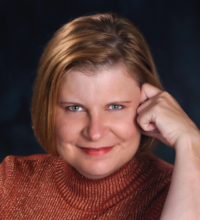
Barbara Palmer is Professor of Political Science at Baldwin Wallace University and is the Creator and Executive Director of the Center for Women and Politics of Ohio (CWPO). The CWPO engages students, scholars, media and the public in the sharing of over 100 years of Ohio history and the remarkable stories of women who have run for public office. Professor Palmer teaches courses on American politics, civil rights and liberties, elections, and women and politics, and serves as the Director of the Legal Studies Program. She has given interviews and invited talks to a wide variety of groups across the country and internationally on American elections and the history of the integration of women into Congress. She has been interviewed by the Washington Post, the Wall Street Journal, Minnesota Public Radio, the Voice of America, and Die Ziet (Germany). Throughout her career, collaborating with non-profit organizations, she has worked with over 500 young women from across the nation, helping inspire them to get involved in politics.
Women Want In: The Remarkable History of Women Running for Public Office and the 2020 Election
The 1992, the number of women in the US Senate tripled. From two to six. The proportion of women in the US House hit 10% of the membership. The exuberant media dubbed the election, “The Year of the Woman.” Almost thirty years later, the 2018 election was again proclaimed to be “The Year of the Woman,” with the number of women in the US Senate reaching 25, and a record increase in the US House from 83 to 102. Since the 1970s, the integration of women into Congress has been achingly slow, with average increase in the number of women in the US House hovering around two or three. However, in 2018 and now again in 2020, we have seen unprecedented numbers of women running for office. Change appears to be happening quickly, but why are there still so few women in Congress? Does this even matter? What impact did Kamala Harris have on the election? And why is Ohio lagging behind these national trends? The history of women running for public office is one of fits and starts, but full of inspiring stories.
Recorded Programs:
From Psychics to Speaker of the House: The Remarkable History of Women Running for Public Office in Ohio
In 1872, Victoria Woodhull, an Ohio native, was the first woman to ever run for president. In the early 20th century, Ohio was one of the first states to ratify the 19th Amendment. In 1922, six women were elected to the state legislature, and Florence Allen was the first woman to ever be elected to a state supreme court in the nation.
One hundred years later, Ohio has never elected a woman to the US Senate or as governor. The 2022 election was the first time in 10 years that the number of women serving from Ohio in the US House increased. The number of women serving in the Ohio Statehouse is stalling. The proportion of female candidates for local offices has been flat for a decade.
Over the past century, we can see a great deal of change in women’s representation in public office; Ohio can claim some remarkable “famous firsts.” Ohio is represented by an increasingly diverse group of women. But some things have remained stubbornly the same. The pool of political candidates is still overwhelmingly male. What are the challenges—and opportunities—that women candidates face?
Women have been running for public office in the United States for 150 years. However, it has only been since the 1970s that we have seen any significant progress in their numbers. In addition to sharing stories of some of the early trail-blazers who ran before the passage of the 19th Amendment, we will explore how historical barriers, such as incumbency and redistricting, have shaped the electoral success of female candidates. Did the 2016 and 2018 elections finally rewrite the rules?
TO SCHEDULE A PRESENTATION , PLEASE CONTACT:
Barbara Palmer
bpalmer@bw.edu
202-413-3526
Speaker Applications
The Ohio Humanities Speakers Bureau is closed for the rest of 2024 and is not currently accepting applications. Check back later in the year for information about the 2025 Bureau!
Interested organizations can still book talks from our United We Stand Speakers Bureau.
Speaker Fee Structure
Non-profit organizations with an annual budget under $150,000 pay a fee of $50.00.
Non-profit organizations with an annual budget over $150,000 pay a fee of $250.00.
Schools (including colleges or universities) and corporate or private entities pay a fee of $400.00.
For any questions, please contact Program Officer Melvin Barnes at mbarnes@ohiohumanities.org.
